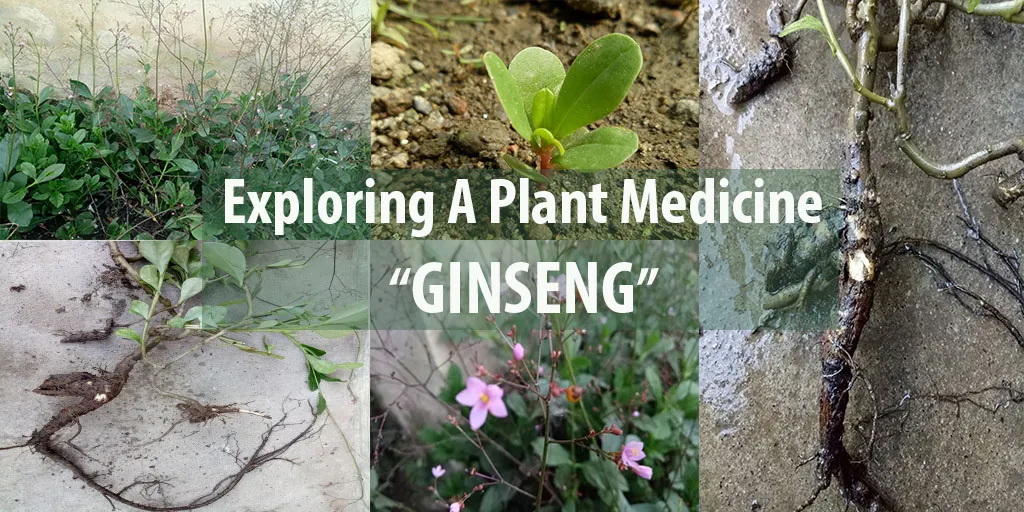
PROLOG
We often do not realize the presence of medicinal plants in our own garden. Likewise with me, who initially did not realize the presence of Ginseng as a plant medicine in my garden. For me, Ginseng is an ornamental plant that adds to the beauty of the garden because it has purple flowers.
Then, there is a challenge from Natural Medicine to explore medicinal plants, with ginseng as one of the theme choices. READ HERE to find out the challenge.
So, I tried to explore ginseng as a plant medicine. I will share the other side of ginseng which is popular in my residence, Indonesia.
As an important note, the type of ginseng that I will discuss is Javanese Ginseng, (In Indonesia: Ginseng Jawa). Some of the same names to call this plant:
- Som Jawa
- Jewels of Opar
- Talinum Paniculatum
- Talinum triangulare
- Som Kon
Introduction of Javanese Ginseng
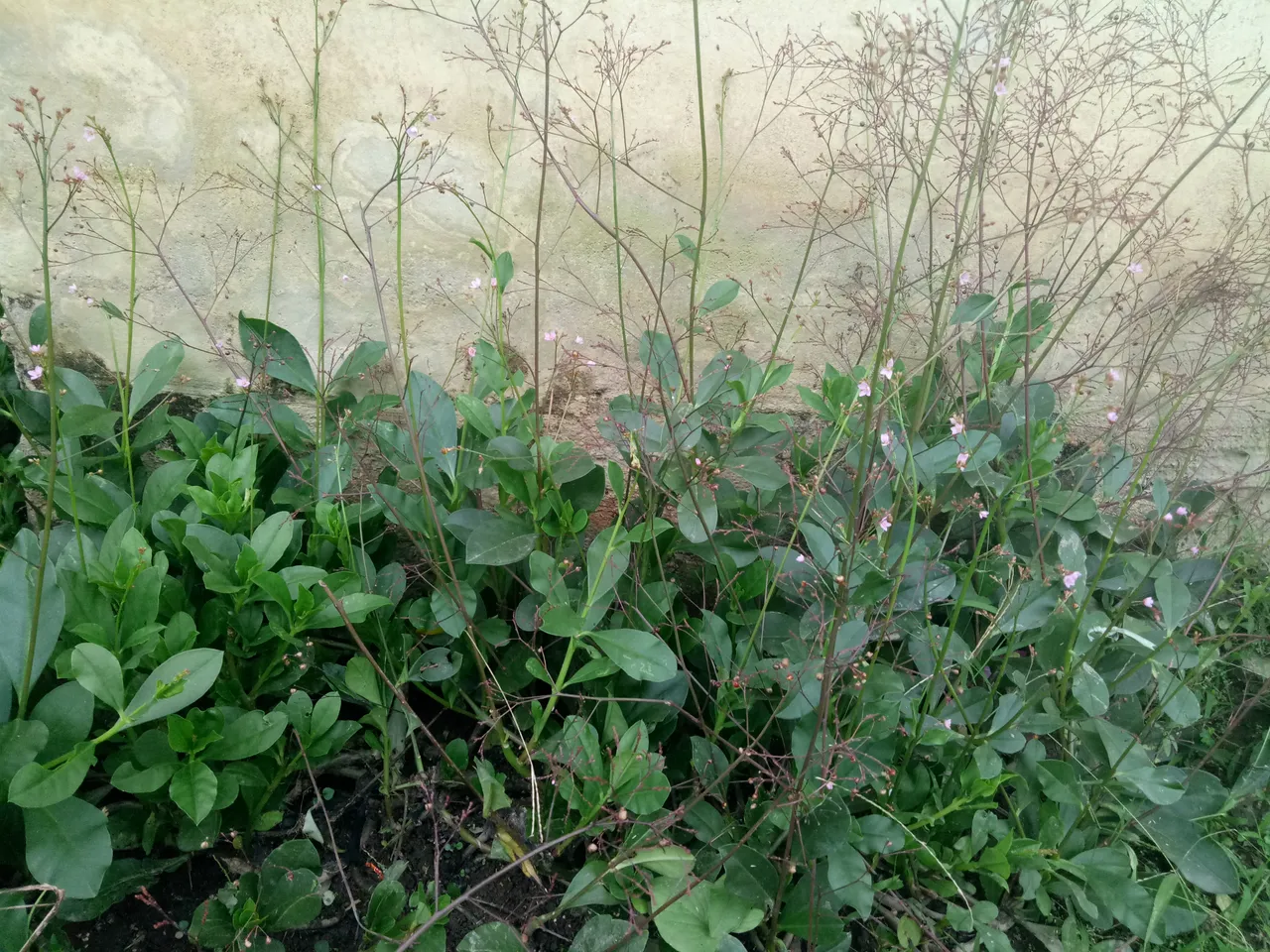
Javanese ginseng is very different from the Panax ginseng. A striking difference is the tuber produced. Javanese ginseng will have smaller tubers compared to Panax Ginseng.
Since childhood, I have known this plant as an ornamental flower and as a vegetable to complement various types of cuisine.
Ginseng is easy to grow and multiply even in a natural way, because very light ginseng seeds are easily carried away by the wind making it easier to grow by itself.
Say hello to the little one!
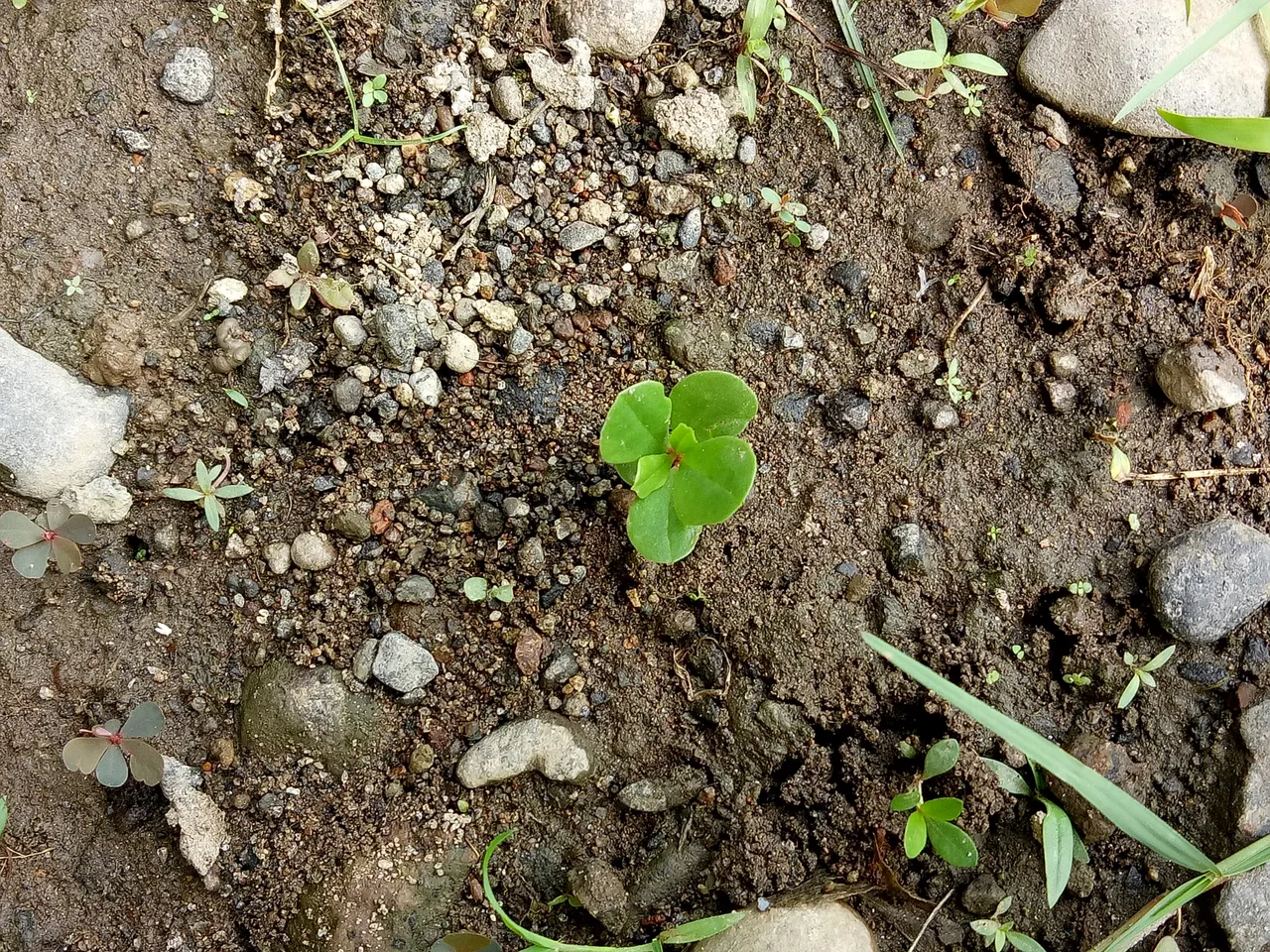
Let's take a closer look at Javanese Ginseng. Luckily, I was able to take various sides of Javanese Ginseng from a small form to a large Javanese Ginseng.

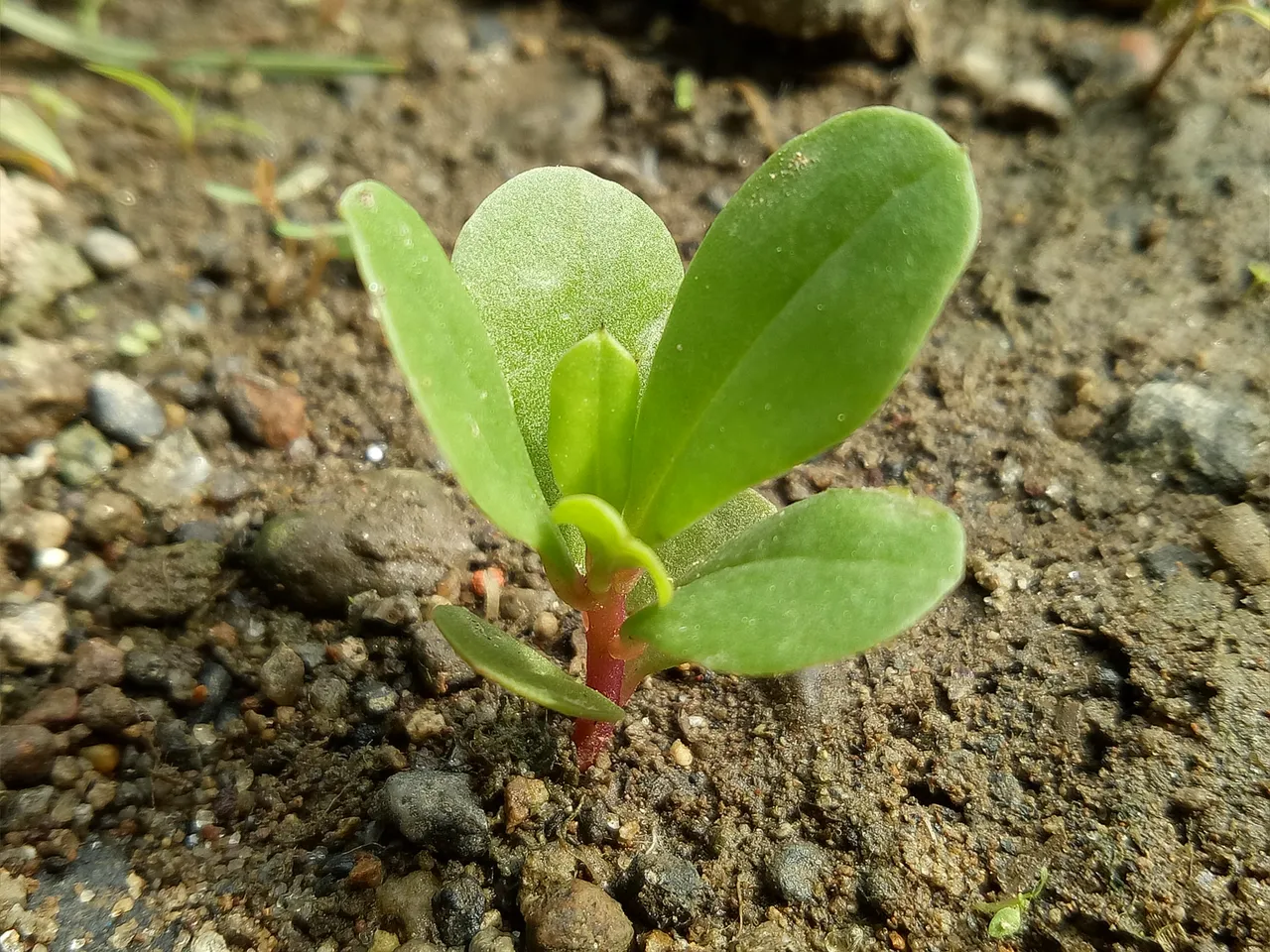

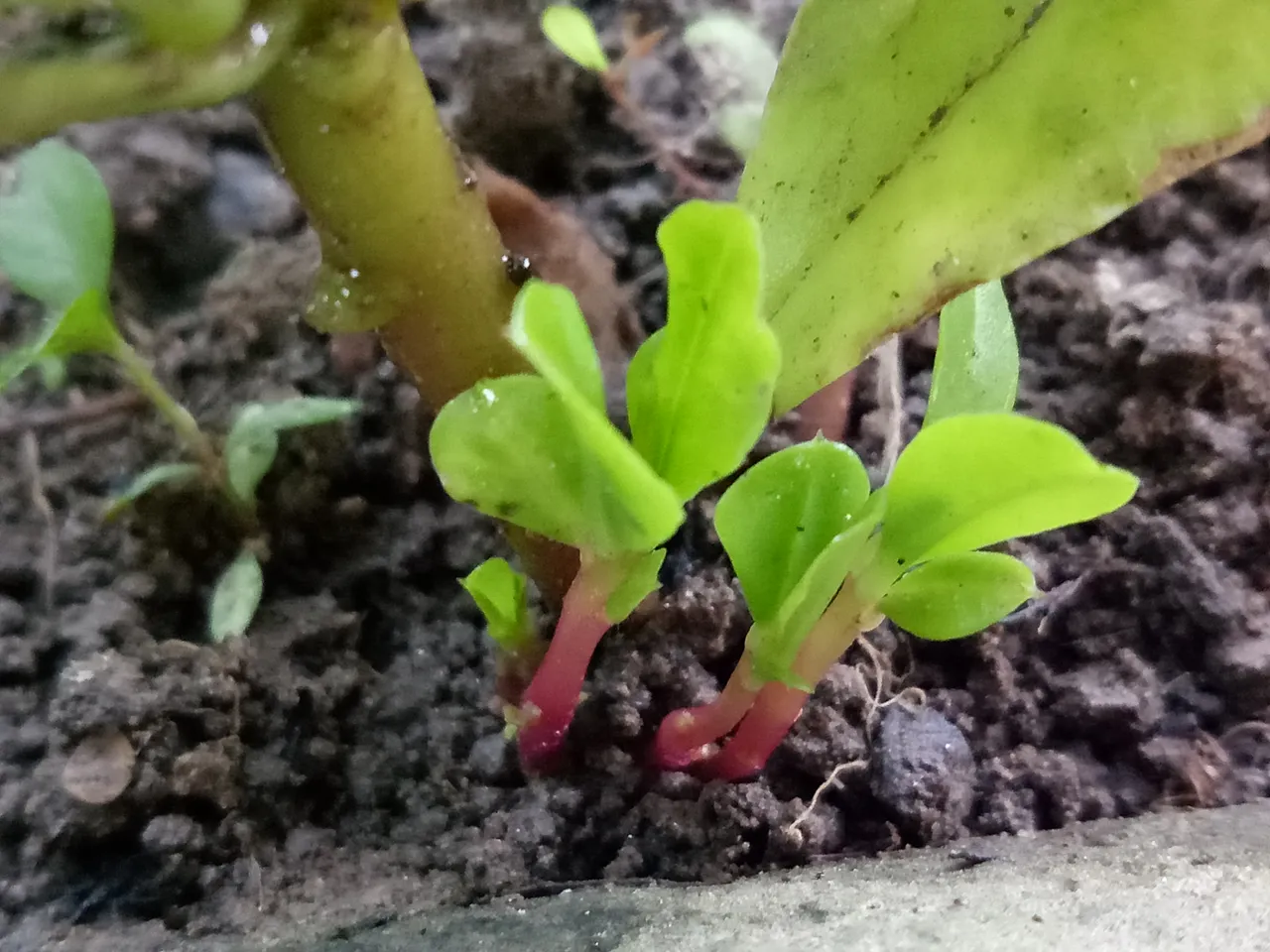
Javanese ginseng that has just grown still has stems that are still small and have not formed clumps.
Javanese Ginseng Increases
The more it grows, we can see the difference in stem structure. The more it grows, the stem will look like type.
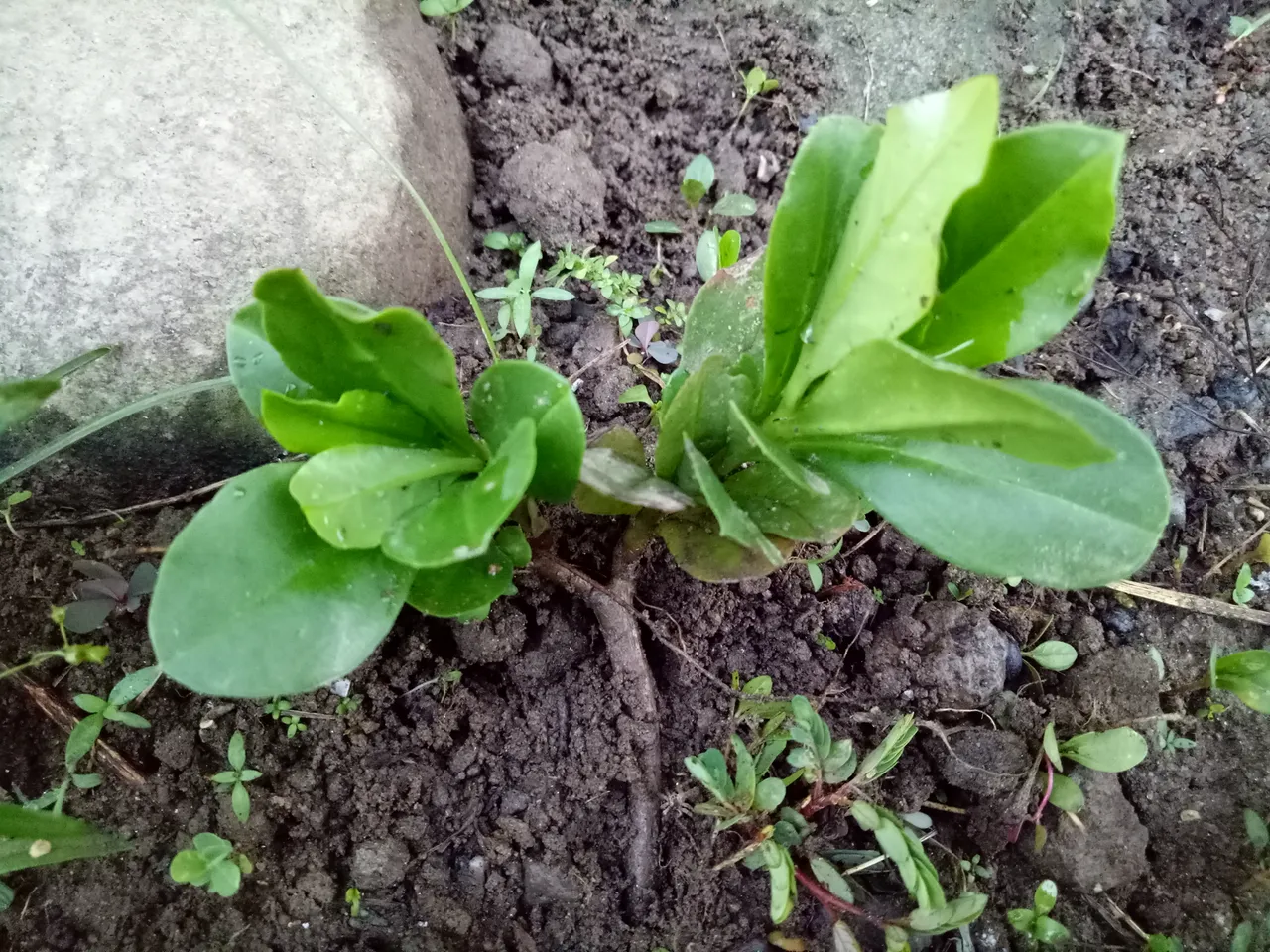

Then, there will also be seen plants that begin to form clumps. The stem is no longer single and looks more stems.
The color of the leaves that are young and old are actually the same. If you see the color difference in the pictures I share, it is caused by different lighting because I took the picture at different times and conditions.
Mature Javanese Ginseng
Increasingly growing, Javanese Ginseng is a plant that clumps, and semi-creeping.
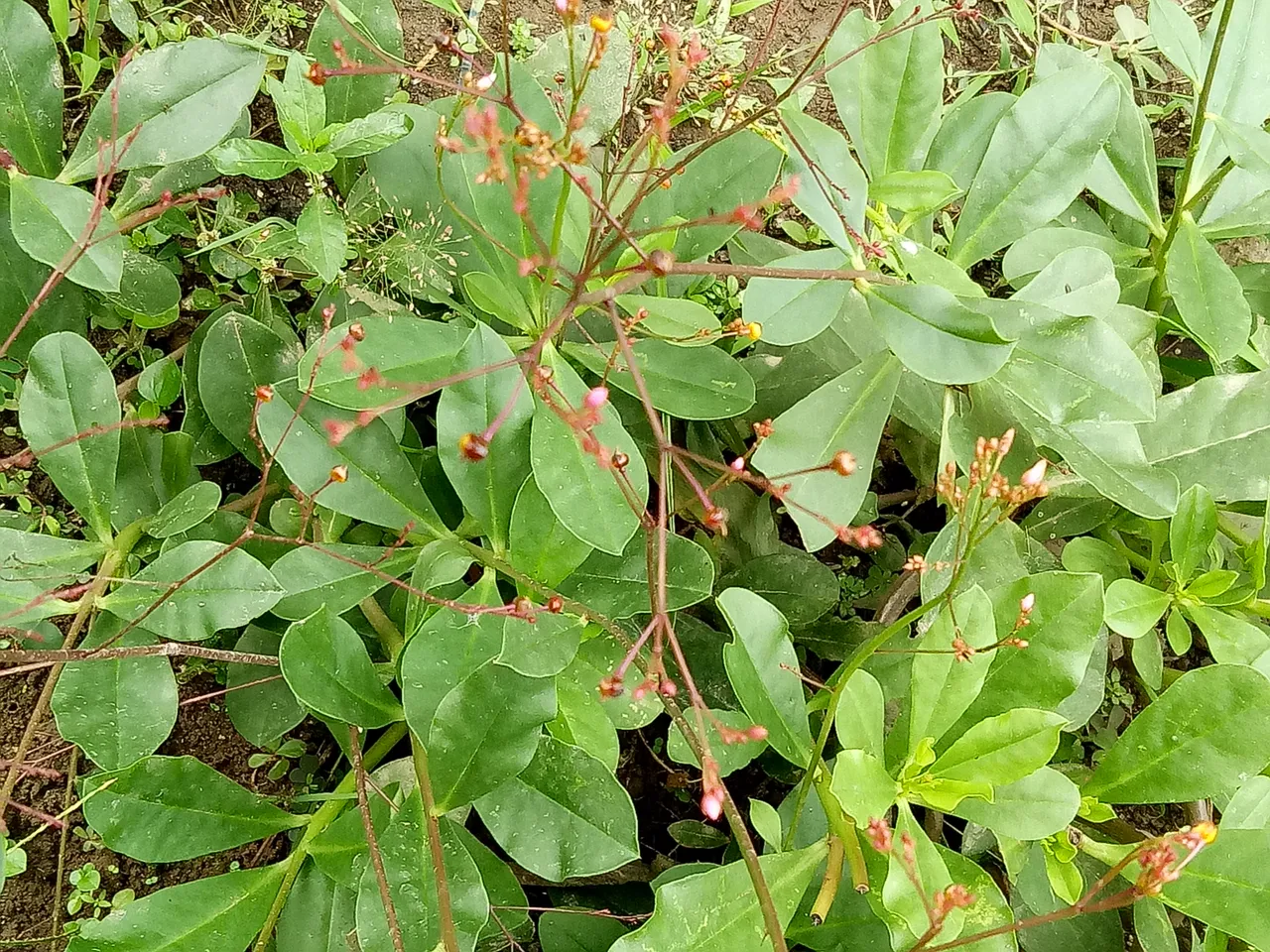
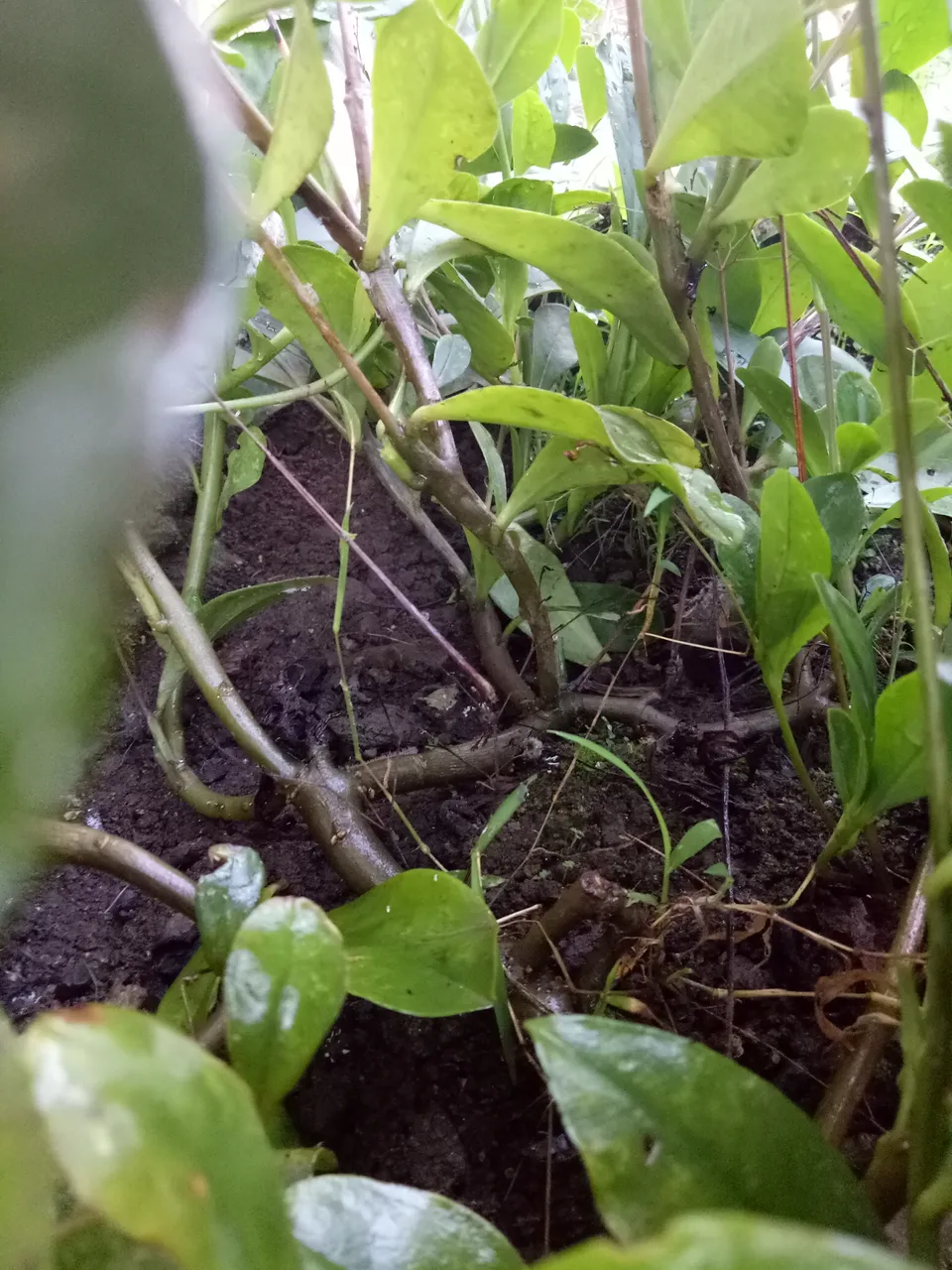
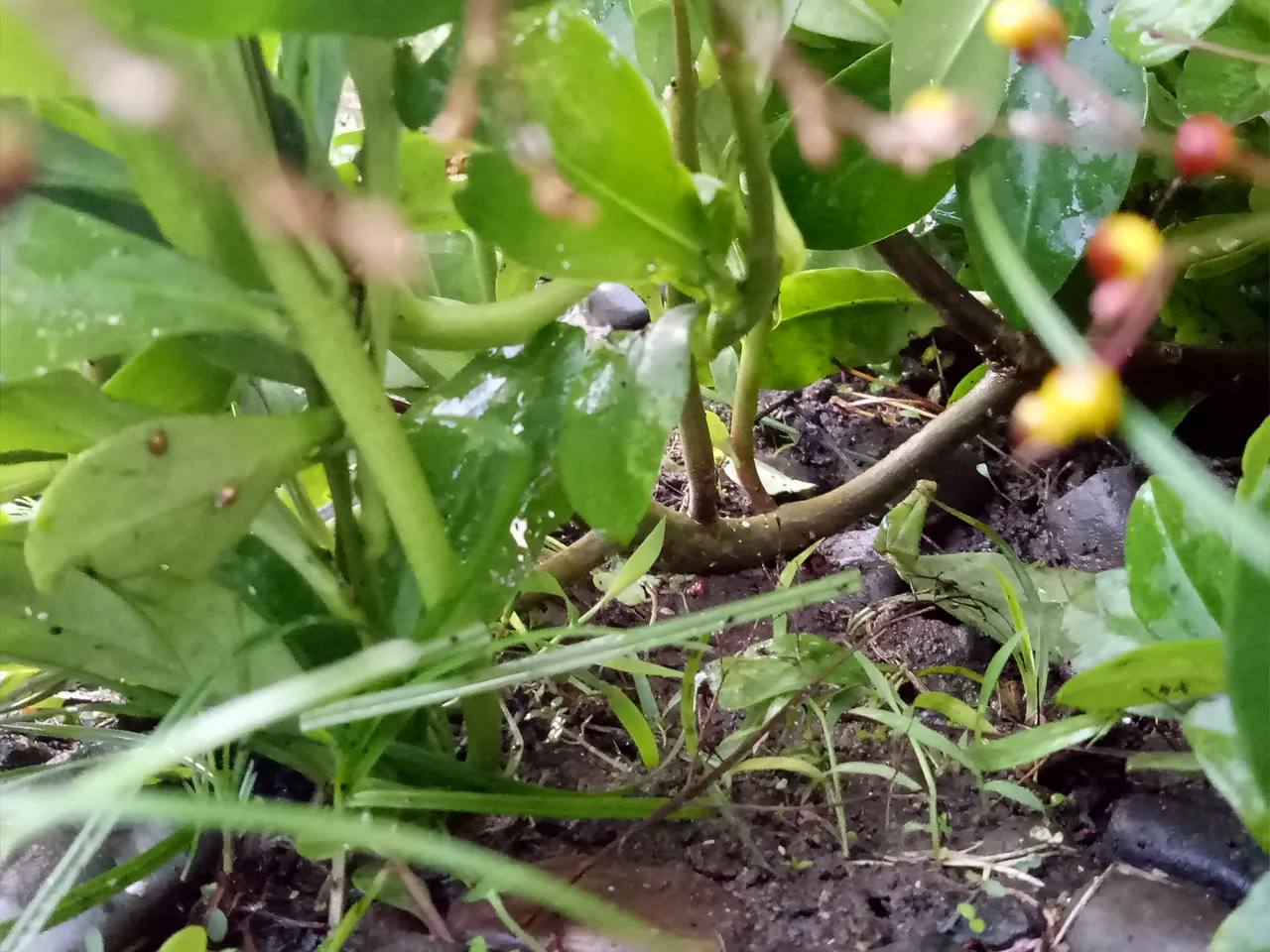
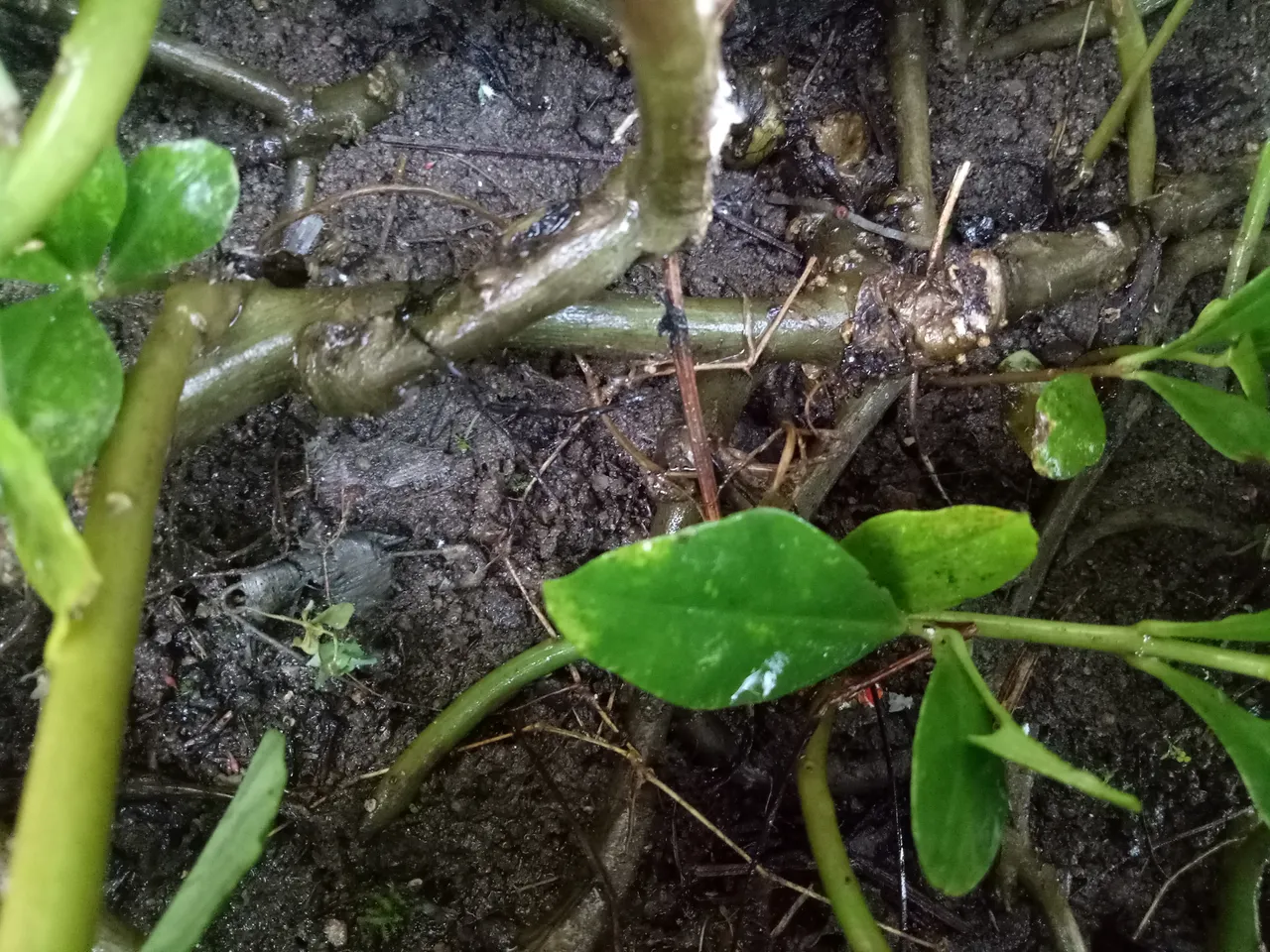
Ginseng root which was originally small, then grew to become tubers that can be used for cuisine ingredients that are tasty and beneficial to health.
We can also see Javanese Ginseng begin to flower and have small yellowish seeds.
FLOWERS
In the village area, it is easy to find Javanese ginseng plants that form clumps and have beautiful flowers. Usually the people in the village plant Javanese Ginseng in the front yard of the house as ornamental flowers.
Even though they have small petals, these small flowers will also appear to dominate in the garden if they have formed clumps.
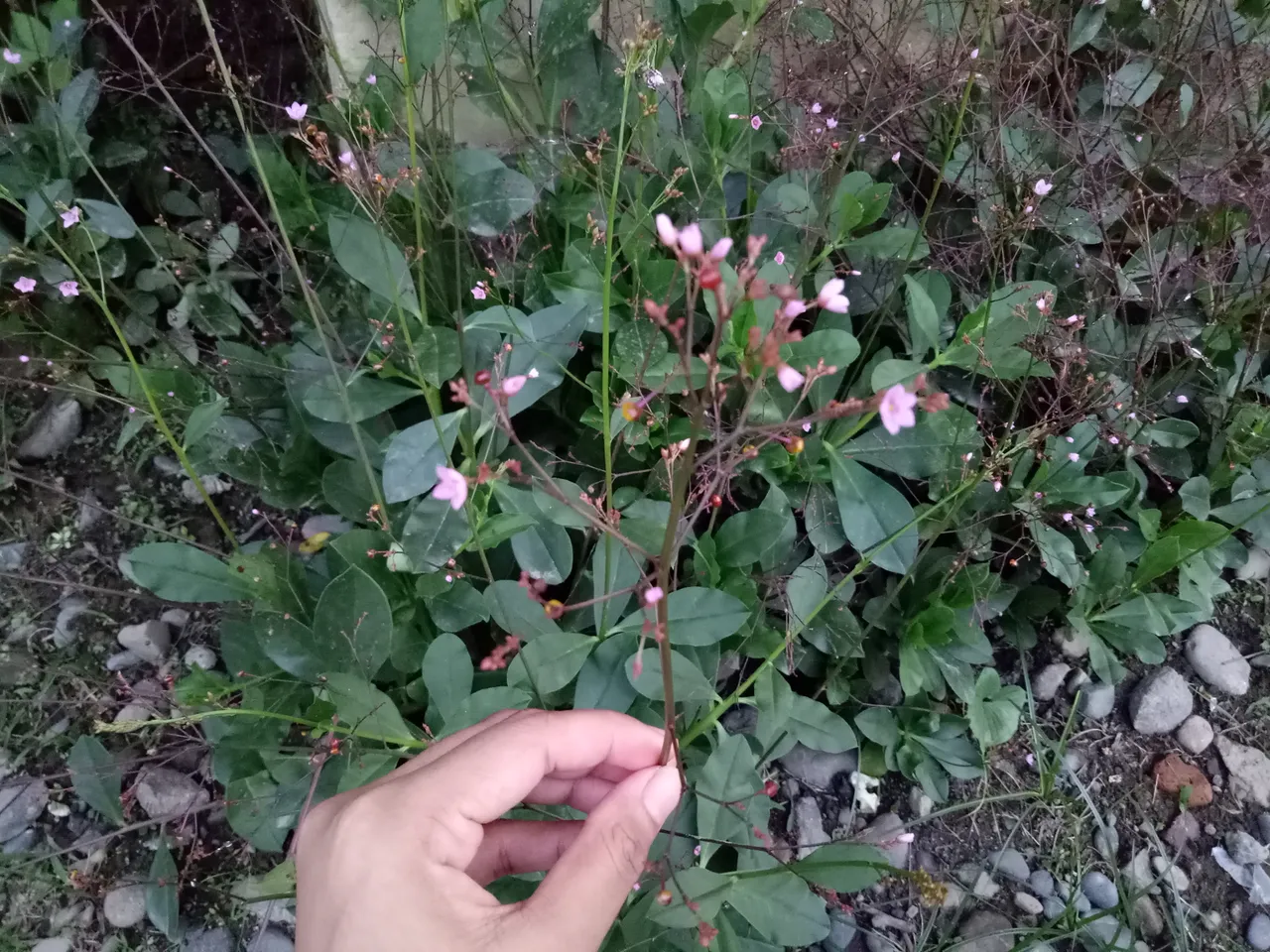
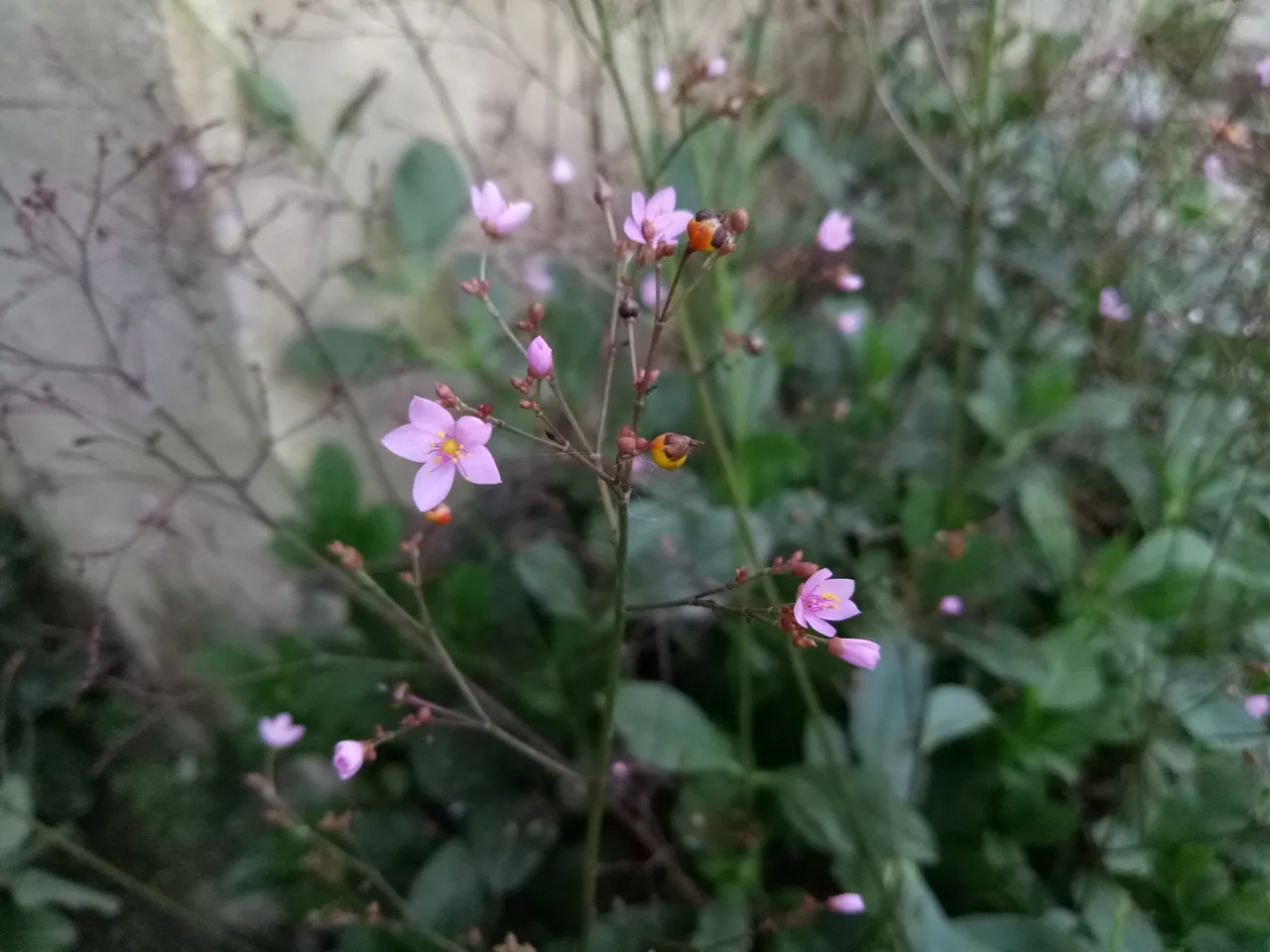

The position of the flower in Javanese Ginseng is higher than that of the main plant because it is supported by stems that grow higher than the position of the leaves.
In the stem that supports the flower, there are no leaves.
Seeds
Javanese Ginseng seeds are in the same position on flowers. The size is very small and yellow. The seeds will then be black and dry out.
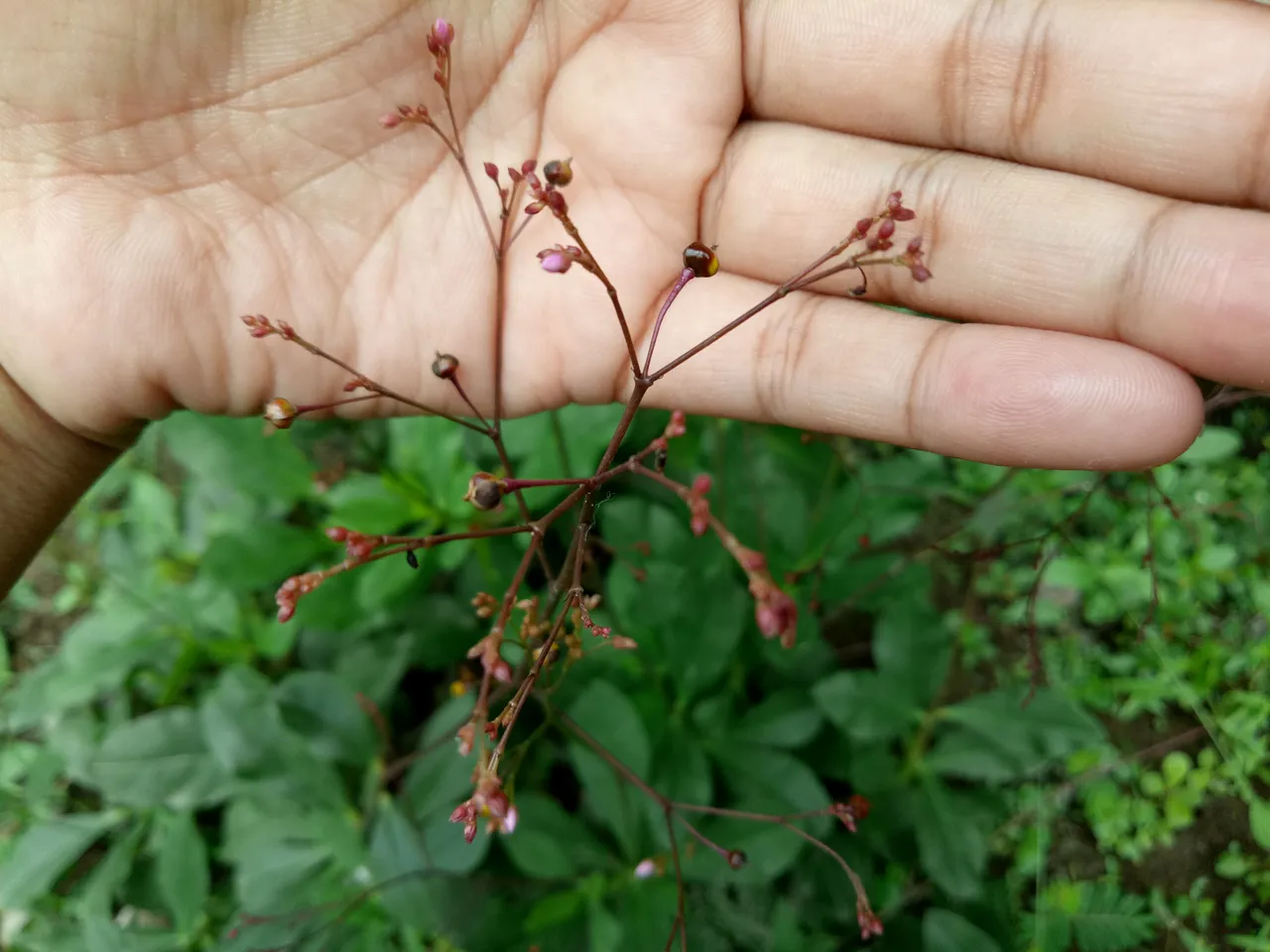
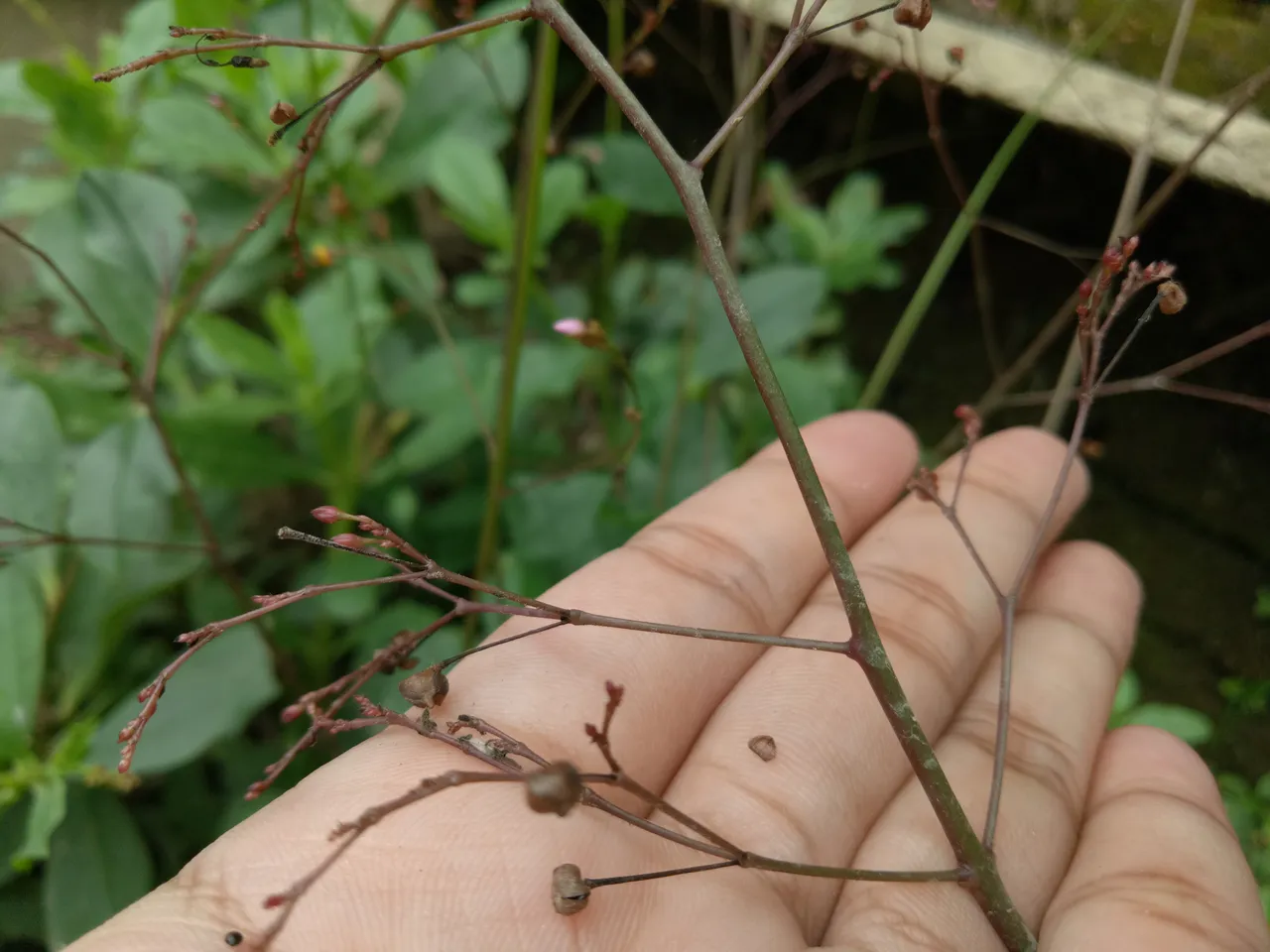
Seeds that have dried are very light and easily carried away by the wind. You can plant Javanese Ginseng with the method of spreading seeds. You only need to spread the seeds that have dried in the place you want. If you don't want to add more plants in other areas, then let the seeds of the Javanese Ginseng spreading by the wind itself.
Roots and Tubers
In my garden there is a Javanese Ginseng which has been quite large for about half a year. I also tried to see the roots and tubers.
I usually use Javanese tubers for a mixture of instant noodles, as well as the leaves.
The roots are very long and penetrate to the ground and break easily. I tried to carefully take the tubers using a knife. Slowly, I dredged the ground.
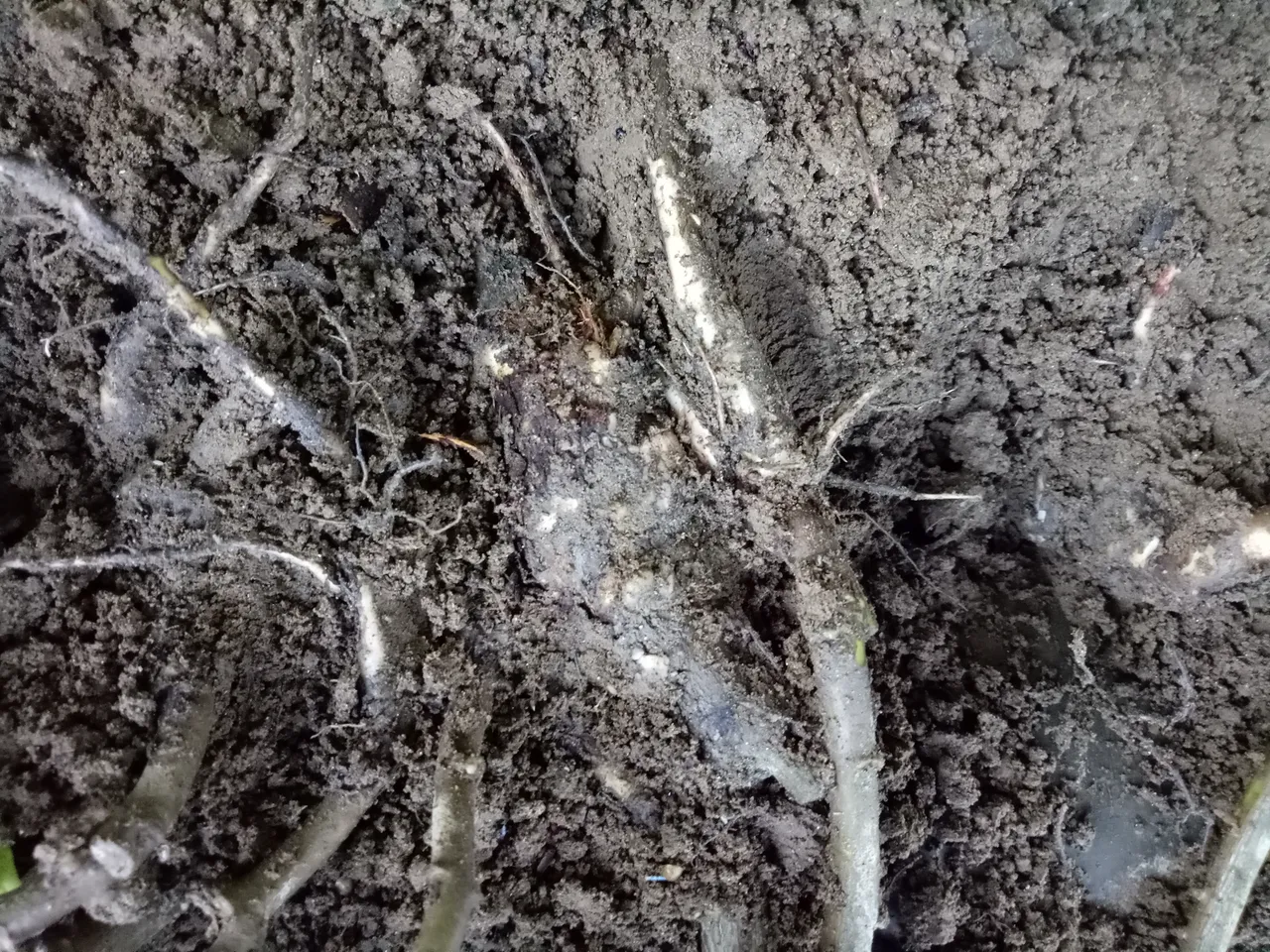
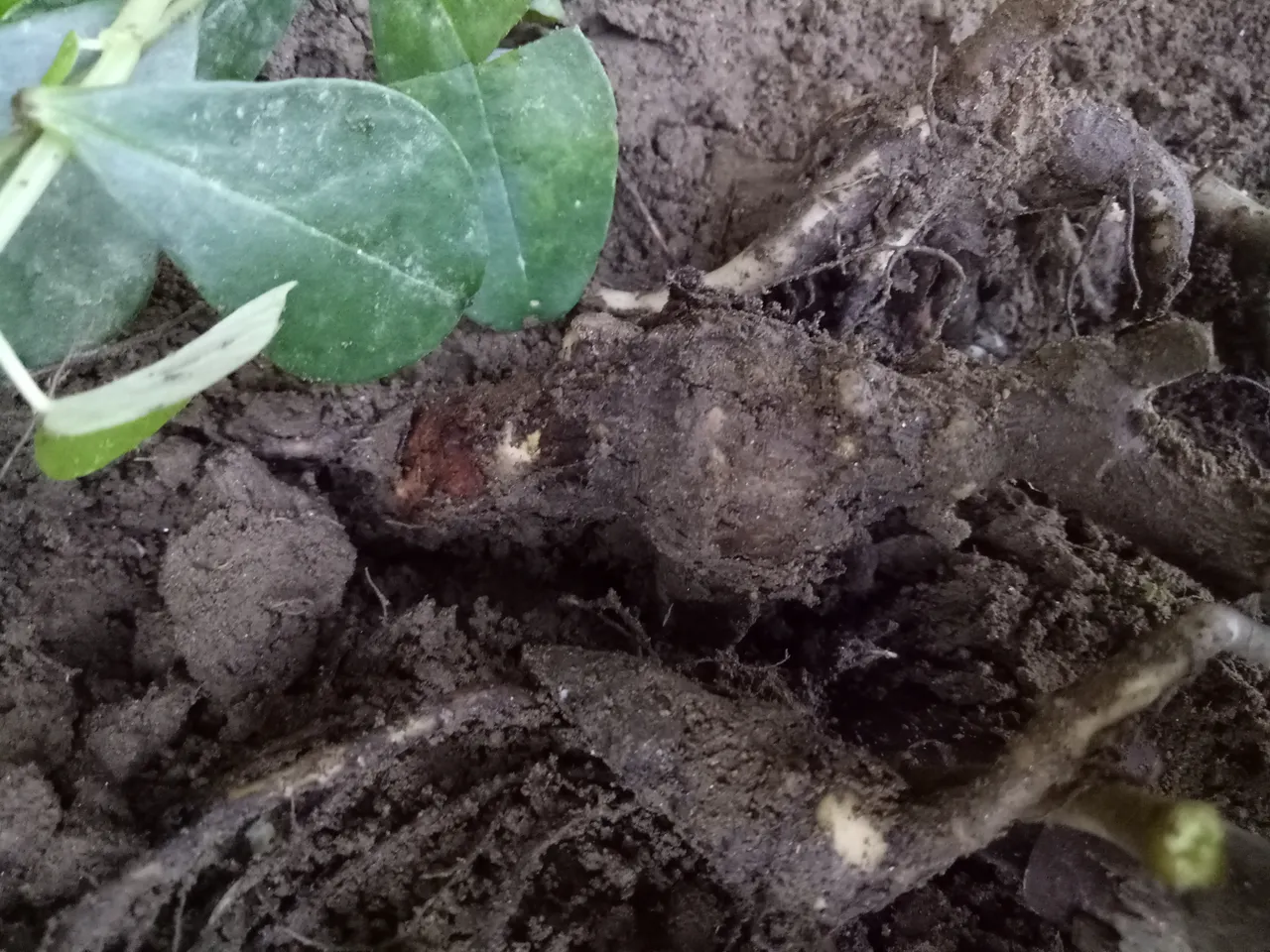
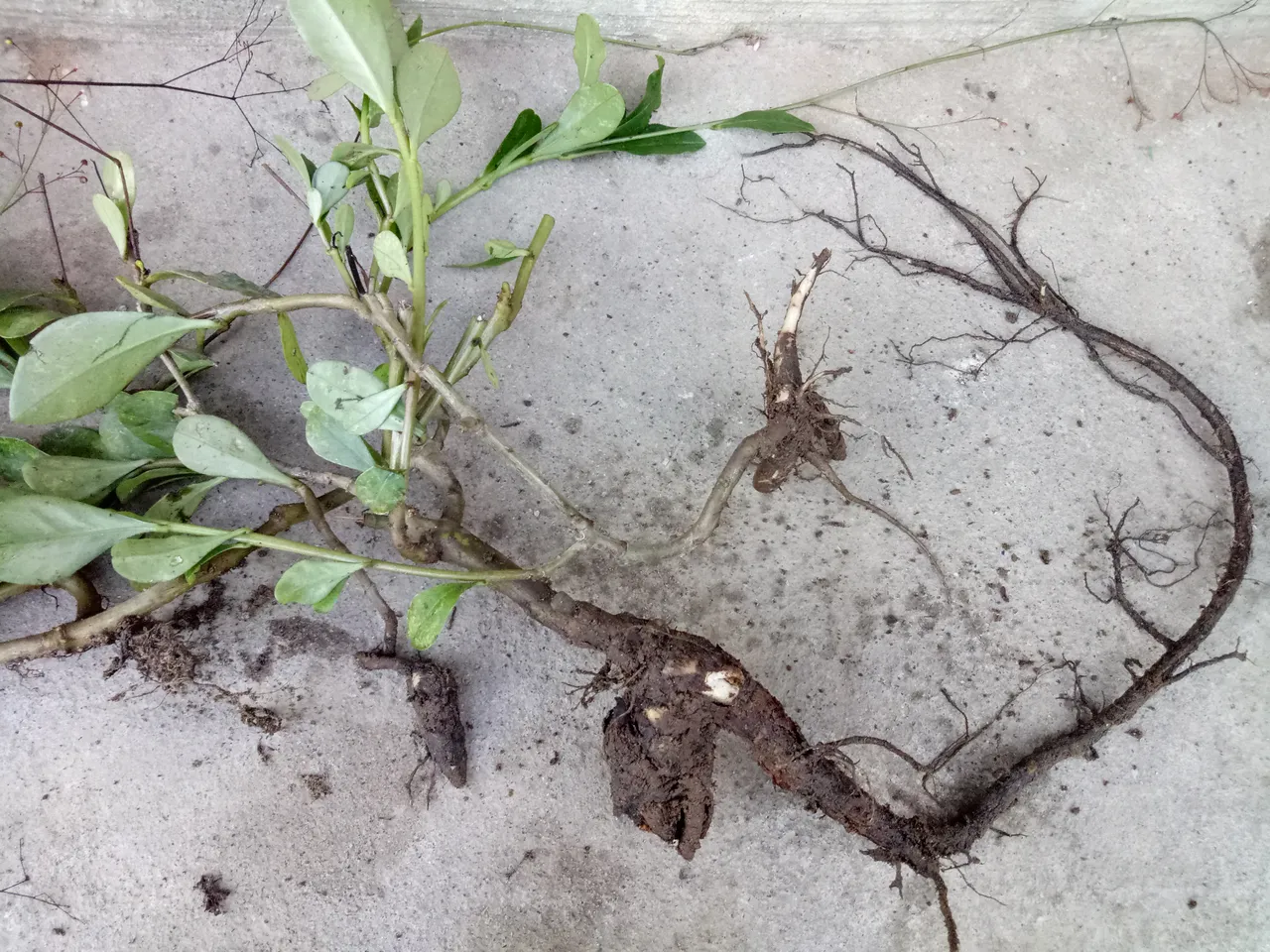
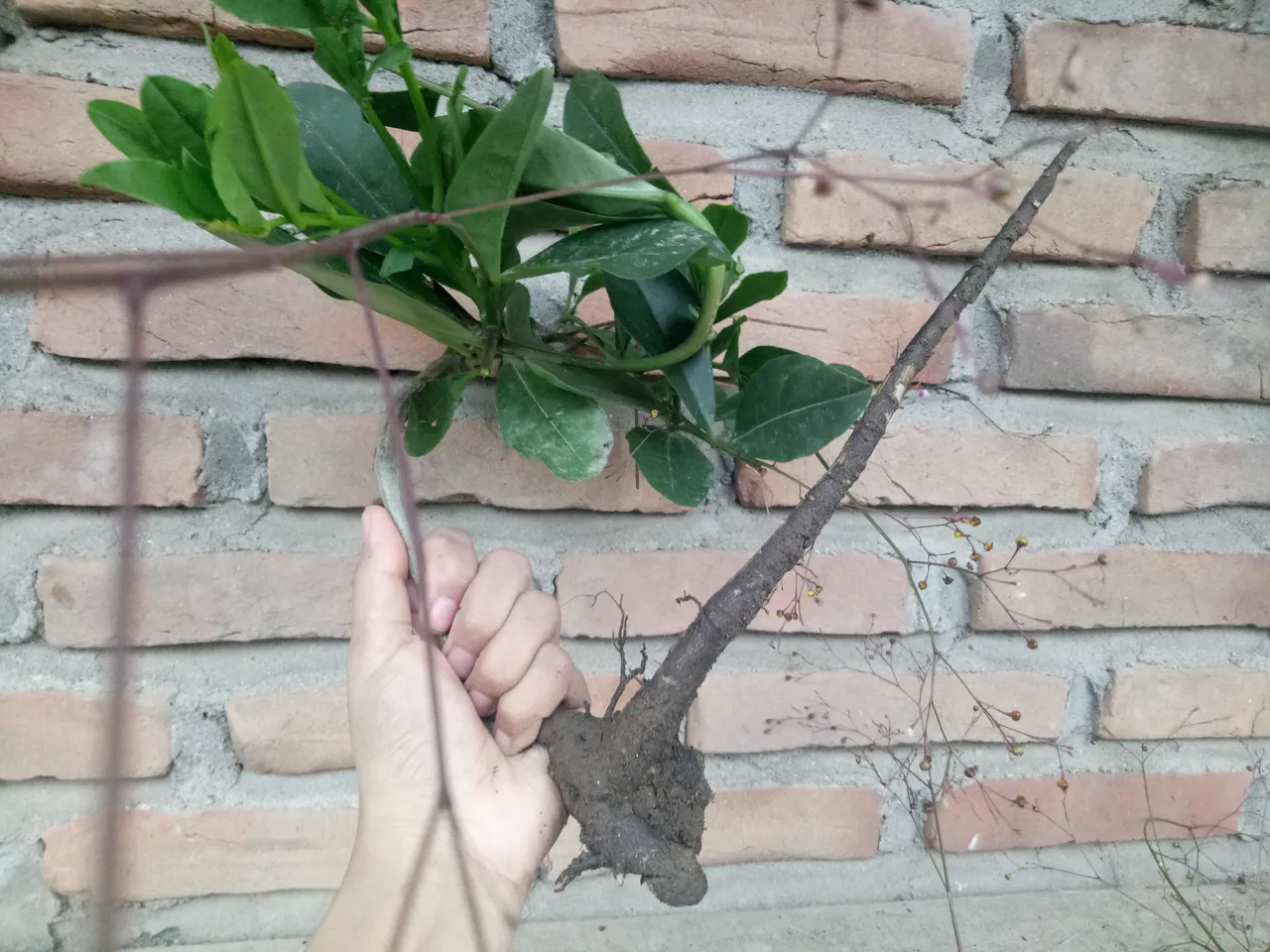

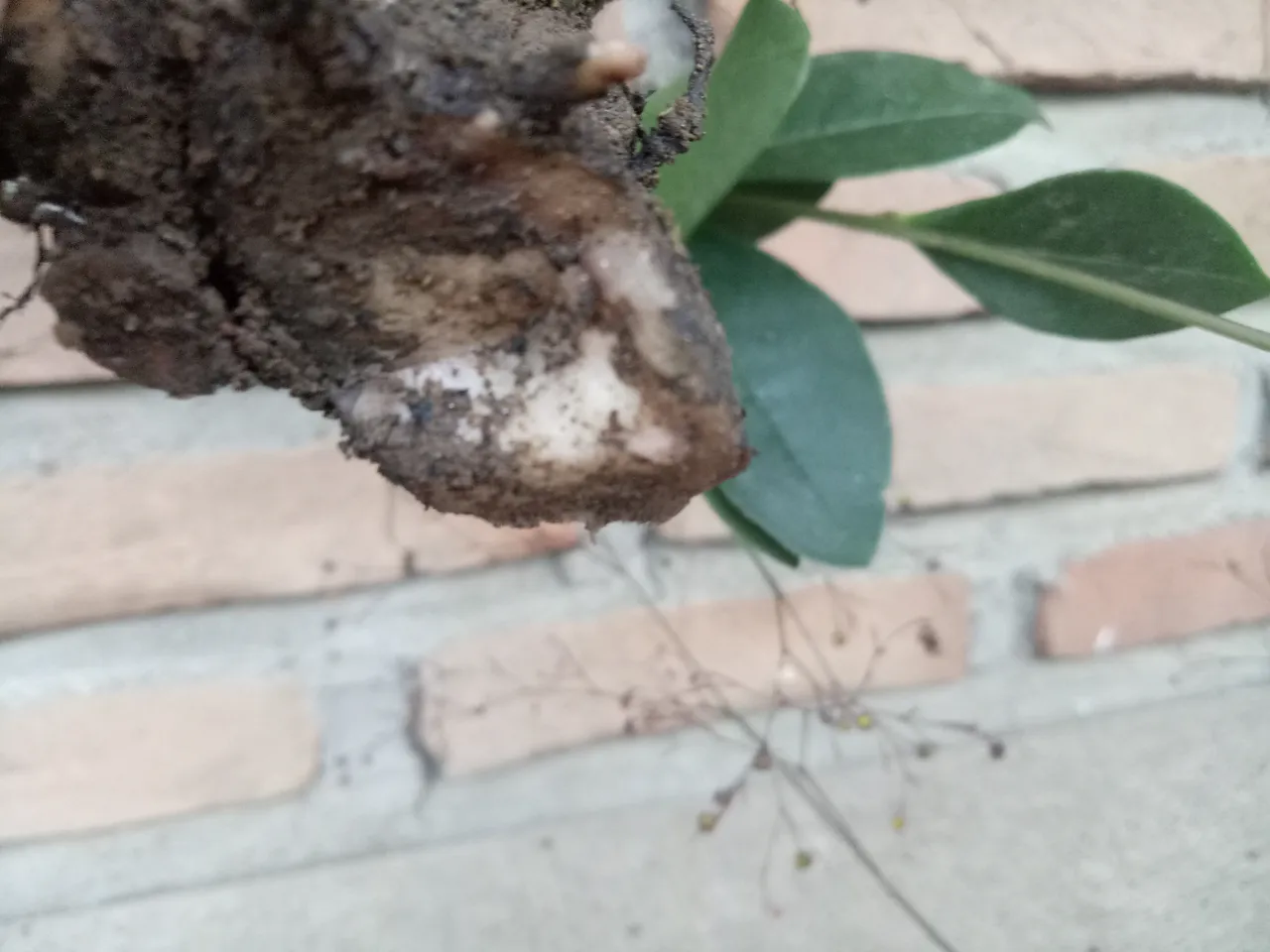
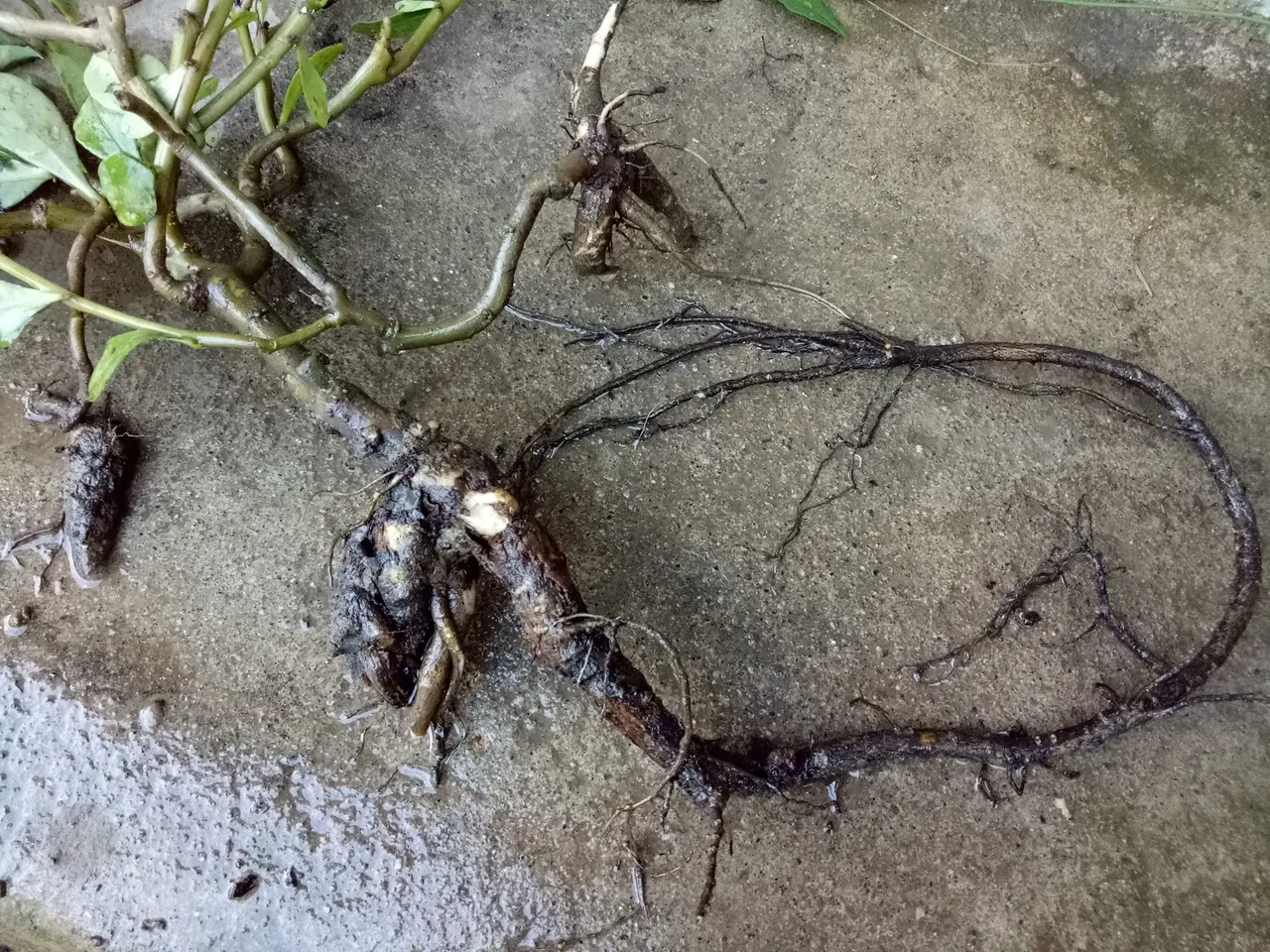

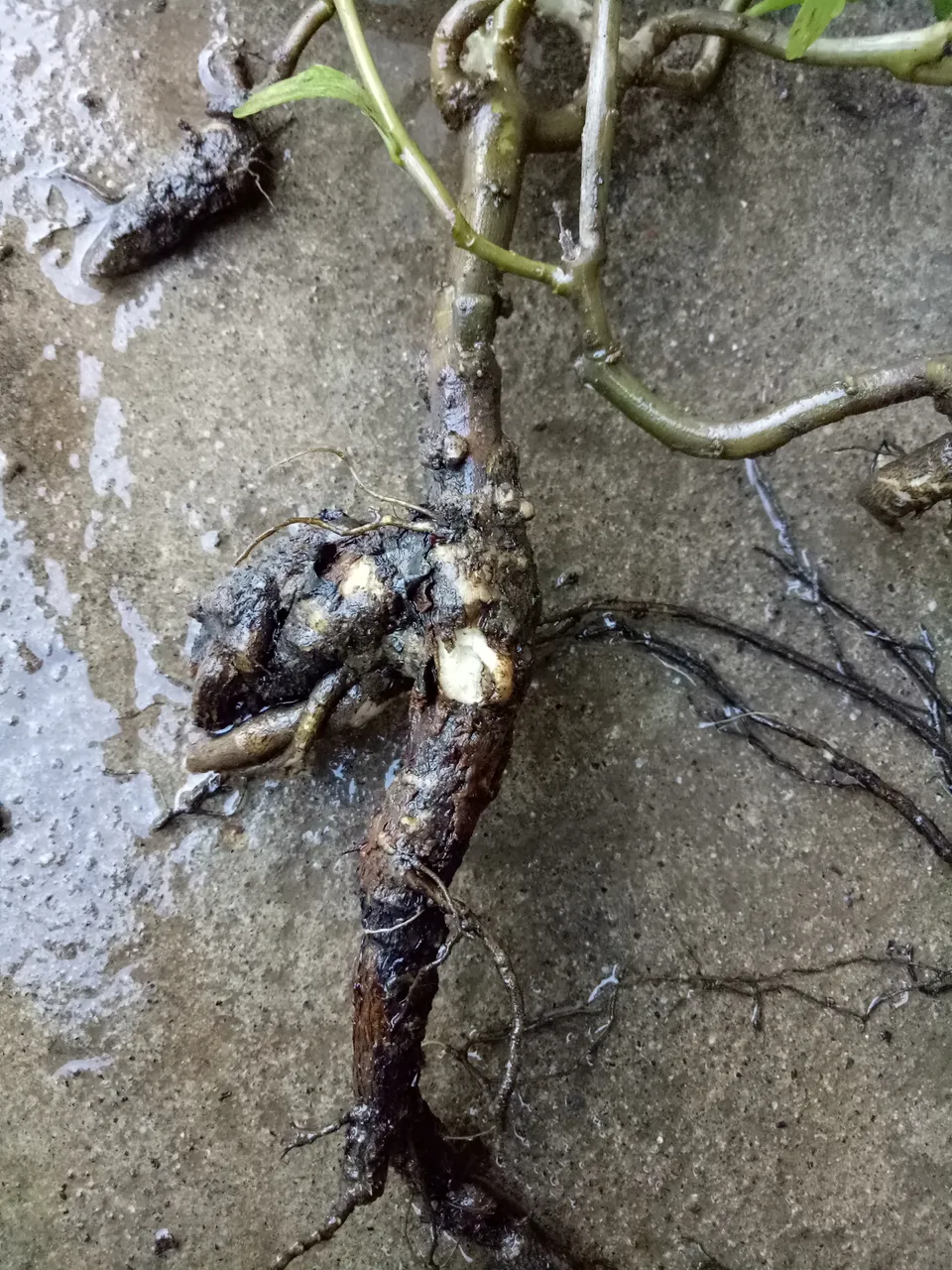
Javanese Ginseng As a Plant Medicine
Now, I will invite you to know the benefits of Javanese Ginseng as a Plant Medicine.
The dried Ginseng root is known for its many benefits. However, this time I will not discuss about this, I will discuss the side of natural medicine that is closer to my daily life, because I have experienced the benefits for myself.
Treating Boils
Boils are indeed skin diseases that often occur in the communities around where I live. I have experienced it several times. Usually the occurrence of boils because it consumes too much protein.
If it is not treated immediately, boils can swell more, and if the boil has not produced pus, then the boils will grow in other parts. But to get rid of pus is very difficult and painful.
Javanese Ginseng leaves contain flavonoids which can reduce swelling in boils and also as antibacterial.
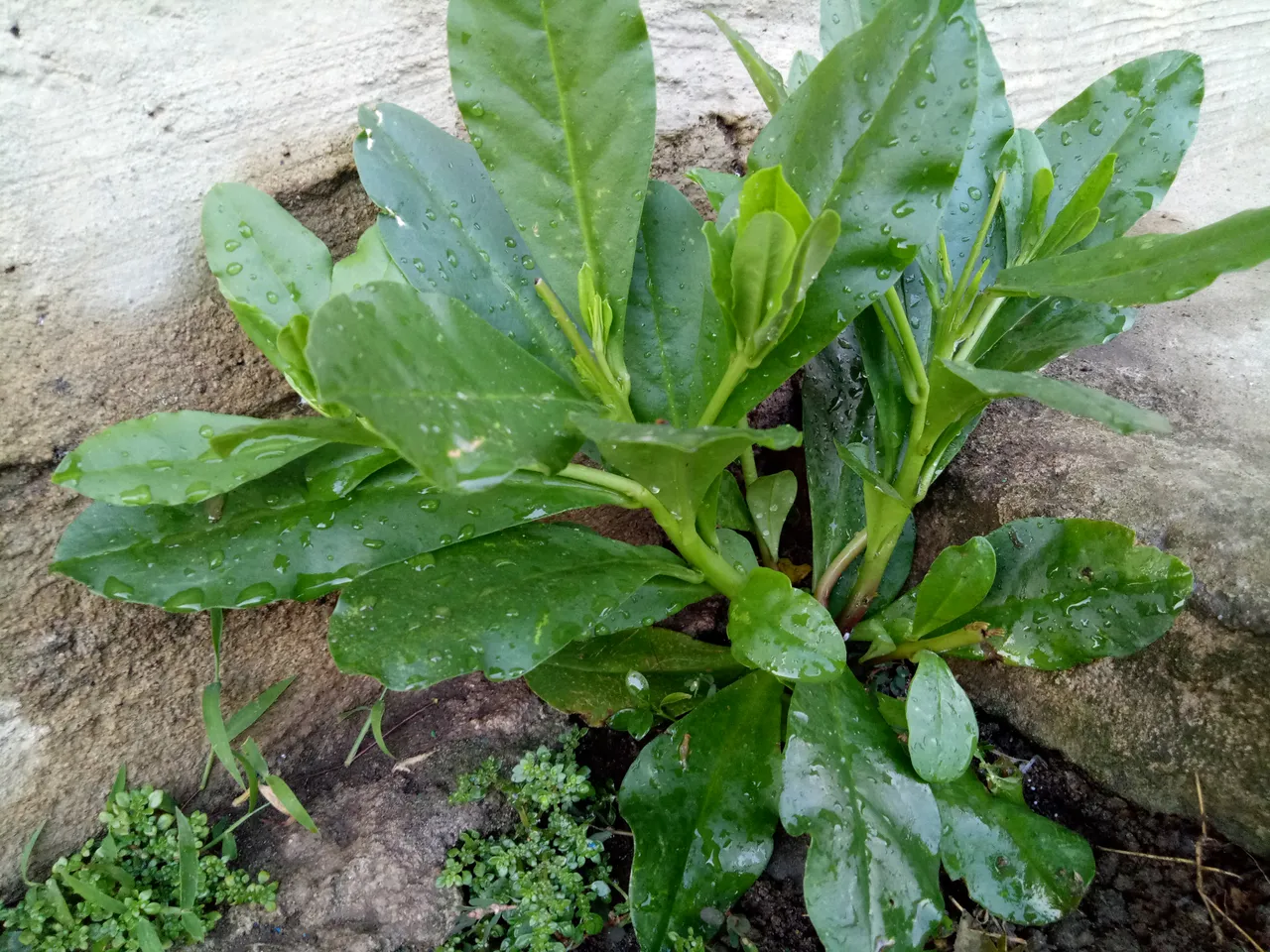
To treat boils, take the leaves of Javanese Ginseng to taste, then give a little water, and simply knead by hand until the leaves remove mucus. Then, apply to boils. Do it twice a day until the boils become deflated without pain.
Note: In some versions in Indonesia, to treat boils, Javanese Ginseng leaves are pounded with a mixture of brown sugar and then apply on boils.
Improving Appetite
Not appetizing is a serious problem that should not be underestimated, because our bodies need a lot of nutrients that are sufficient to grow and develop properly.
Improving appetite with leaves or tubers of Javanese Ginseng can be an option. The trick is to mix Ginseng leaves with other vegetables in a dish.

How to improve my appetite:
Noodles are foods that are usually chosen by Indonesians when they don't have the appetite to eat staple food (rice)
That's why I often mix ginseng tubers and leaves into the noodle dishes.
Combine ginseng tubers and leaves that have been cut like you use vegetables to stir fry.
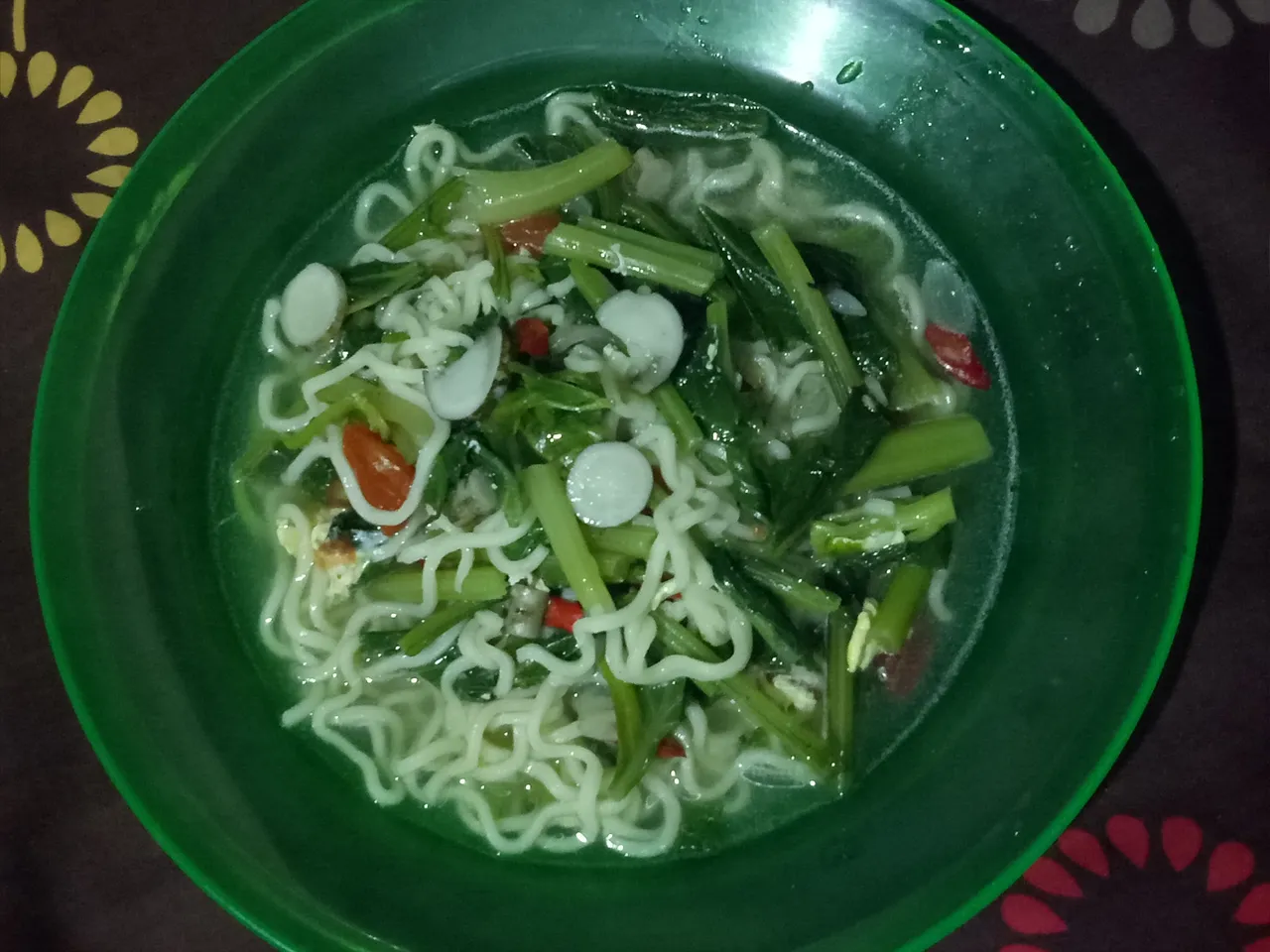
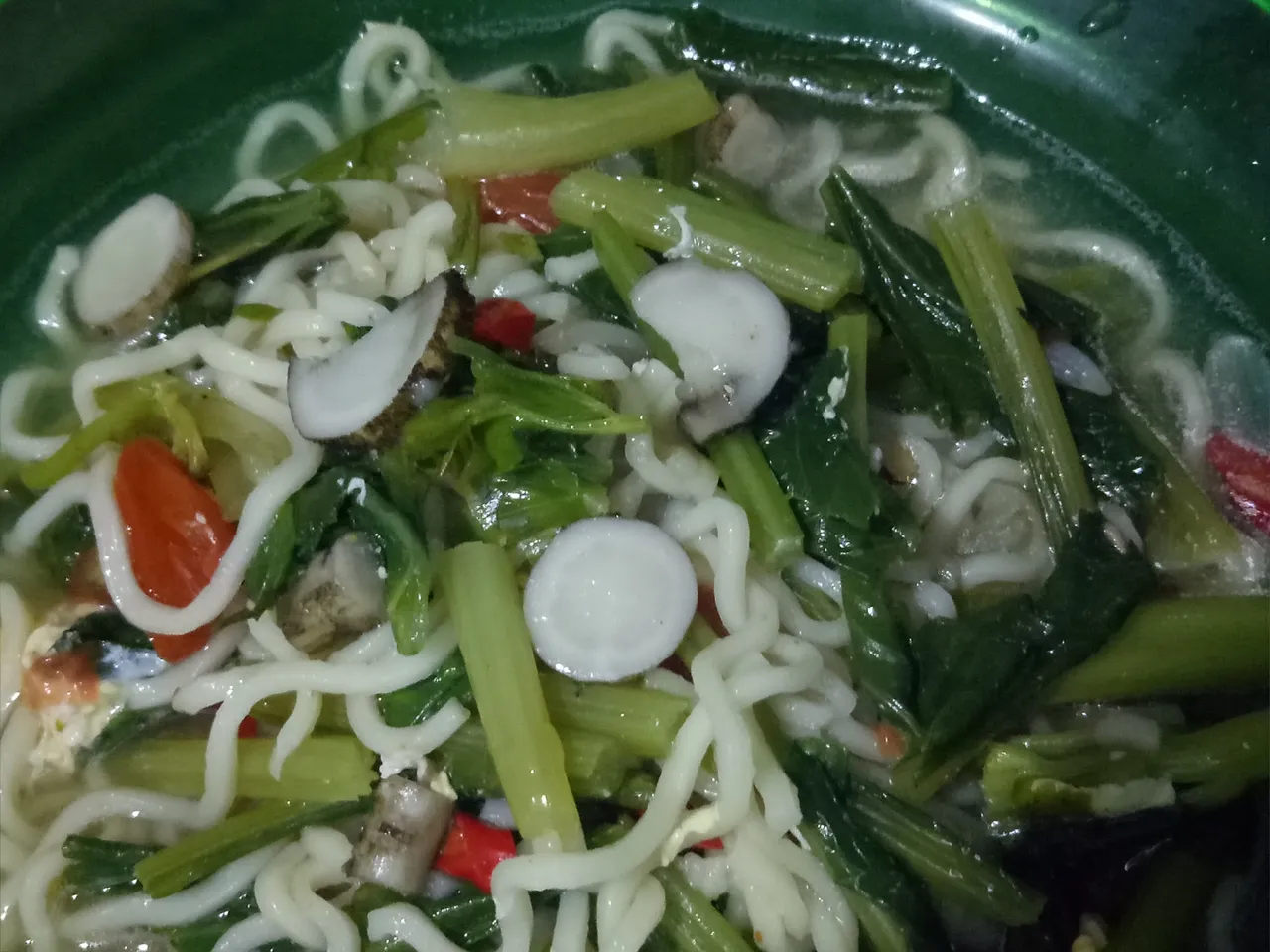
Helps Boost of Breast Milk Production
To boost breast milk production after giving birth, people in the village usually use radishes, katuk/sauropus androgynus leaves, and young papaya. For those who have Javanese Ginseng leaves, they can mix these ingredients together with Javanese Ginseng leaves, then make soup or just to stir fry.
Other Benefits
There are also other benefits of Javanese Ginseng: to improve the quality of sleep, maintain lung health, improve blood circulation, increase vitality, and maximize central nervous performance which is believed to be able to prevent Alzheimer disease.
These benefits can be obtained in the same way by consuming ginseng leaves and or ginseng tubers as vegetable preparations such as soup, stir-fry, or salad.

CONCLUSION
That was about Java Ginseng and the benefits of this small plant. Indeed, Panax Ginseng has greater benefits for natural medicine. But, of course there is nothing wrong for you to plant Javanese Ginseng in your garden or front yard of your house. Especially for Indonesian people who are very familiar with this plant.
Javanese ginseng can also be found in other Asian regions. For those of you who have their own traditions in your area about using Javanese Ginseng as a plant medicine, please give me feedback in the comments below.
Hopefully my writing can have benefits, so you don't waste time for reading my posts.
Thank you so much for upvote and comment. Have a great day.
Keep growing with your confidence.
Keep healing with Natural Medicine.
HONARABLE MENTION
For supporters who make Our Steem Blockchain positive and continues to grow up:
@theycallmedan, @jaki01, @kobold-djawa, @redpalestino @nathanmars, @slowwalker, @singhcapital, @neoxian, @tatjanastan, @r2cornell, @canadian-coconut
Regards,
AnggrekLestari
- A Part Of Natural Medicine Community

Natural Medicine Series:
- Exploring The Philosophy of Life From Plant Medicine: Thyme
- Benefits of Betel Leaves and Some Reasons Why I Planted Betel in the Garden
